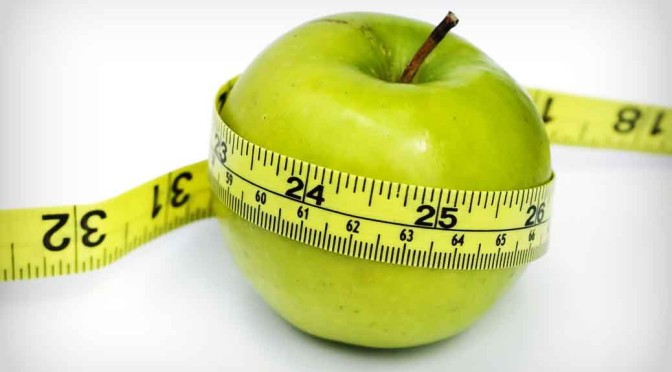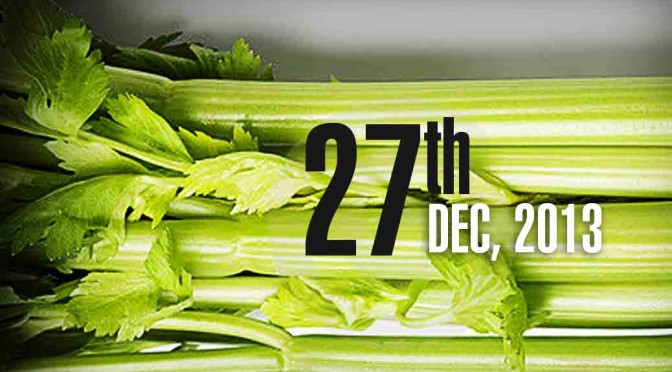By Anupum Pant
Here are some impractical, practical and bizarre ways to lose weight scientifically:
1. Practical – Switch to Smaller Plates [Study]
While it may sound like switching plates won’t help your diet, it actually greatly affects the way you see, and consume food. In the long run it helps you lose weight effortlessly.
If you don’t believe me, I suggest you look at the following common optical illusion – Tell me which one of the circle that is filled with black color, is larger?

You know the answer. Although they don’t look equal to our not-so-smart brain, both of the circles are really equal in size. But what does that tell you?
Moral: Think of the black circle as food. Put it in a larger plate and you think it is less food, and you don’t mind adding little more food to it. Whereas, if you use smaller plates, the amount food looks like it is a lot already. As a result, if you own only small plates, you won’t add more food. Who am I to tell you that little changes give big results.
It has been proven by scientists that using smaller standard plates will reduce your consumption by around 20% every time. 20% is not less!
Note: Similarly, if you want to drink less, you could try replacing your short and stout glasses with taller glasses. This technique is based on another optical illusion known as the T-Illusion – which says that we tend to over-estimate the length of objects placed vertically. See it for yourself. [link]
Other Good Ways: In fact, before moving on to the bad ways, you must know that there are several good ways to lose weight without even trying hard. For instance:
- Drinking good amounts of cold water can help to some extent.
- Or, you could try making it a rule to turn away and use stairs, every single time you come across an escalator.
- When you are travelling in a bus, make it a rule to always get down one stop before your destination.
- An apple before breakfast everyday can help you lose weight by making you feel full due to its fiber content. – [Source]
- Just place a mirror in your kitchen or your refrigerator door. Yes, that helps. How? See this – [Video]
2. Bizarre – Excessive Gum Chewing? [Study]
Wait! Before you try this, let me tell you, this is one of those impractical / bizarre ways to experience severe weight loss I was talking about in the first line of this post. Since excess of anything isn’t good – backed by the fact that in ancient China people committed suicide by eating a pound of salt – chewing excess gum probably isn’t a good way to lose weight. I mention it just for the sake of information.
Sugar-free chewing gums contain Sorbitol – a laxative. Chewing these in excessive amounts – about 15+ a day – can cause serious weight loss and chronic diarrhea.
You’ll end up in the hospital if you try this.
3. Impractical – Don’t get Married. [Study]
Although deciding to remain single all your life is not so impractical for everybody, you could consider it socially impractical (at least in orthodox Indian societies).
Yes, studies prove that Married men were 25% more likely to be overweight or obese than single men or men in committed relationship (i.e. dating or engaged). – Thanks to UsefulScience.org
Now, go and subscribe the budding 59 Seconds channel on YouTube and buy the book. That is what I am doing…











